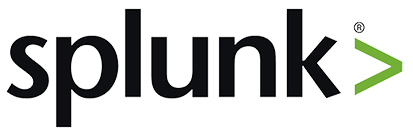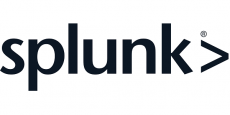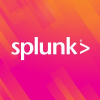|
By Kayly Lange
As IT costs continue to balloon, many organizations are caught between the desire to scale and the pressure to cut costs. It’s an incredibly delicate balancing act leaders struggle to maintain: while 66% of companies in one study said they plan to increase their IT budgets, 84% were worried about a recession, while 63% struggled to secure IT talent. By spending on infrastructure, organizations are forced to spend less on innovation. But what if there is a way to have both?
|
By Stephen Watts
Digital experience monitoring (DEM) is the evolution of application performance monitoring (APM) and end user experience monitoring (EUEM) into a comprehensive tool that analyzes the efficacy of an enterprise’s applications and services. Essentially, DEM combines these functions and goes beyond both — all to ensure consistency across the customer experience.
Introducing the Observability Center of Excellence: Taking Your Observability Game to the Next Level
|
By Mike Simon
Chasing false alerts — or worse, having your system go down with no alerts or telemetry to give you a heads-up — is the nightmare we all want to avoid. If you’ve experienced this, you’re not alone. Before joining Splunk, I spent 14 years as an observability practitioner and leader for several Fortune 500 companies and in my 2.5 years with Splunk I have had the opportunity to work with customers of all shapes and sizes.
|
By Jeff Wiedemann
Has your organization finally developed that game changing generative AI application? Is your CTO, CIO, or CEO banking on it being a success? I bet they are! Now, here’s the big question: Are you prepared to monitor and troubleshoot your new application once users get engaged? Fear not, my boy Derek Mitchell has you covered with two incredible Splunk Lantern articles which goes deep into how Splunk Observability Cloud allows you to instrument GenAI apps to gain critical observability insights.
SRE, DevOps and Platform Engineering are important concepts in today's world of software development. There are dedicated teams to manage these areas, each with a unique primary focus, set of responsibilities, tools and metrics used to gauge their performance requirements. This article explains SRE, DevOps, and Platform Engineering, including similarities and differences, and, most importantly, how these teams help streamline modern software development, delivery, and maintenance processes.
|
By Amruta Dhotre
Calling all Splunk Cloud Platform admins! At Splunk, we are constantly working to improve the way we service our customers. We understand that maintenance windows, while necessary, can sometimes be impactful to your operations. That is why we’re excited to announce a significant upgrade to our maintenance experience, designed to provide you with greater control and minimal impact.
|
By Muhammad Raza
Chaos Monkey is an open-source tool. Its primary use is to check system reliability against random instance failures. Chaos Monkey follows the testing concept of chaos engineering, which prepares networked systems for resilience against random and unpredictable chaotic conditions. Let’s take a deeper look.
|
By Joe Hertvik
Just as every organization should have a business plan, every organization should also have an IT strategy that supports that business plan. This article offers an overview of what an IT strategy is, what it does for an organization, and the key components that should go into an IT strategy.
|
By Joanna Zouhour
Most engineers will tell you this: Troubleshooting today feels like trying to find your way out of a wild jungle, in the middle of a storm, at night, while a countdown clock is running. In other words, it’s ambiguous, nerve-racking, and plain difficult. But should this be the norm?
|
By Adam Schalock
Are you looking for a way to increase your AIOps signal to noise ratio and get more value from your data? In this article we will explore how one can utilize OpenTelemetry’s collectors, processors and data models to add or enhance classification attributes. These attributes can help you use your AIOps tools more efficiently and derive more value from your current data.
|
By Splunk
Learn how the asset inventory provided by Splunk Asset and Risk Intelligence delivers a much-needed source of truth, bringing together different sources, helping to discover previously unknown assets, and delivering context and enrichment for key cybersecurity activities.
Troubleshooting Microservices with Splunk Observability Cloud and the AI Assistant for Observability
|
By Splunk
In this video, I’m going show you how to troubleshoot microservices in Splunk Observability Cloud using features like APM’s Service Map and Tag Spotlight to identify what’s causing our microservice to produce high error rates. We’ll then review Related Logs in Log Observer to determine why the error in our service is occurring.
|
By Splunk
In this video I will introduce you to the concept of Observability as Code and what that looks like in Splunk Observability Cloud. I’ll first discuss the issues you might encounter managing infrastructure manually, and then define Infrastructure as Code so that you have a better understanding of the motivation behind Observability as Code. We’ll briefly introduce Terraform and then I’ll discuss the benefits of implementing Observability as Code using Splunk’s Terraform provider in Splunk Observability Cloud.
|
By Splunk
Streamline manufacturing by unifying IT and OT systems with Splunk. Secure, monitor, and troubleshoot your entire operation to boost productivity, reduce risk, and increase uptime.
|
By Splunk
In this video I will demonstrate how to use the Splunk Terraform Provider. I’ll explain what it is and why you should use the Splunk Terraform Provider as part of your overall Observability as Code solution. Using a simple Terraform project, I will walk you through the setup of the provider and the creation of a Detector in Splunk Observability Cloud.
|
By Splunk
The Splunk Platform allows you to build third-party applications to deliver innovation at scale for enterprise. Watch this video to learn how and get started on building and growing your developer identity!
|
By Splunk
Splunk ITSI is an AIOps solution that correlates and applies machine learning to all data for real-time, predictive performance monitoring and integrated IT management workflows. This enables teams to prevent incidents before they impact the business, and detect, respond and resolve incidents all from one place.
|
By Splunk
Splunk customers share how our technical experts have helped them drive business outcomes across security and observability application's.
|
By Splunk
Our customer's share how they feel about Splunk Customer success and how we support them through many different ways.
|
By Splunk
In this video I’ll walk through the steps to instrument a PostgreSQL database using the Automatic discovery and configuration feature of the Splunk OpenTelemetry Collector. We’ll use an install script to install and run the Collector with discovery mode on a Linux machine where the database is running. I’ll then show you how to properly configure the PostgreSQL receiver properties so that the Collector is able to connect and authenticate to the database. Once the Collector is successfully configured, I’ll show you how to view those metrics in Splunk Observability Cloud.
|
By Splunk
Gaining insights from your data requires more than collecting and analyzing metrics and logs. With the acceleration of customer and business demands, site reliability engineers and IT Ops analysts now require operational visibility into their entire architecture, something that traditional APM tools, dev logging tools, and SRE tools aren't equipped to provide. Observability enables you to inspect and understand your IT stack; but what is it, and how does it differ from IT monitoring?
|
By Splunk
The hype around artificial intelligence (AI) and machine learning (ML) has exploded, sometimes overshadowing the real uses and innovations happening everyday at organizations across the globe. The reality is that applying AI and ML to data-dependent challenges presents opportunity for better security, faster innovation and overall improved efficiency.
|
By Splunk
Imagine a world where incident alerts arrive 30 minutes before problems even begin - you'd actually have the power to prevent outages and deliver a truly seamless experience to your customers. Sound impossible? Think again - the right AIOps (Artificial Intelligence for IT Operations) solution can help you maintain uptime, reduce manual incident-management tasks and increase productivity.
|
By Splunk
At Splunk, we make it easy for our customers to turn mountains of machine data in their Amazon Web Services (AWS) and hybrid environments into valuable business, operational and security insights that improve their businesses.
|
By Splunk
Most IT organizations have adopted event management as a central practice to help find and fix what's broken, but today's tools focus on managing the volume of events-they do not deliver service context. Without context, you are ill-equipped to focus on the right problem at the right time. What you need is something different-something that makes IT events less eventful and more insightful-and now, you can finally do it!
|
By Splunk
From protecting customer experience to preserving lines of revenue, IT operations teams are faced with increasingly complex responsibilities while being required to prevent outages that could harm the organization. Splunk IT Service Intelligence (ITSI) utilizes AI powered by machine learning to deliver a predictive IT and ensure optimal application performance and quality.
|
By Splunk
The financial services industry has unique challenges that often prevent it from achieving its strategic goals. The keys to solving these issues are hidden in machine data-the largest category of big data-which is both untapped and full of potential.
|
By Splunk
Let's face it - the struggle to monitor basic server metrics in modern hybrid infrastructures is real. But deploying and maintaining monitoring tools doesn't have to be a major headache. Splunk Insights for Infrastructure can help your team index both Linux and AWS data, enabling them to quickly identify and remediate the root cause of problems.
|
By Splunk
Splunk is probably the single most powerful tool for searching and exploring data you will ever encounter. Exploring Splunk provides an introduction to Splunk -- a basic understanding of Splunk's most important parts, combined with solutions to real-world problems.
|
By Splunk
Digital transformation has led to complex environments that continuously generate new data. As a result, organizations are left unsure about how to best use their data to foster growth and edge out the competition. It's not enough to just have mountains of data, it needs to be analyzed and made sense of in a way that best suits the business.
- October 2024 (7)
- September 2024 (17)
- August 2024 (14)
- July 2024 (11)
- June 2024 (11)
- May 2024 (15)
- April 2024 (12)
- March 2024 (15)
- February 2024 (8)
- January 2024 (20)
- December 2023 (17)
- November 2023 (31)
- October 2023 (30)
- September 2023 (18)
- August 2023 (29)
- July 2023 (21)
- June 2023 (16)
- May 2023 (21)
- April 2023 (20)
- March 2023 (27)
- February 2023 (12)
- January 2023 (11)
- December 2022 (8)
- November 2022 (15)
- October 2022 (13)
- September 2022 (20)
- August 2022 (17)
- July 2022 (28)
- June 2022 (25)
- May 2022 (10)
- April 2022 (19)
- March 2022 (16)
- February 2022 (10)
- January 2022 (17)
- December 2021 (21)
- November 2021 (23)
- October 2021 (21)
- September 2021 (16)
- August 2021 (19)
- July 2021 (45)
- June 2021 (36)
- May 2021 (22)
- April 2021 (38)
- March 2021 (32)
- February 2021 (29)
- January 2021 (20)
- December 2020 (27)
- November 2020 (21)
- October 2020 (30)
- September 2020 (22)
- August 2020 (24)
- July 2020 (30)
- June 2020 (20)
- May 2020 (34)
- April 2020 (40)
- March 2020 (21)
- February 2020 (15)
- January 2020 (23)
- December 2019 (2)
- November 2019 (1)
- October 2019 (8)
- September 2019 (3)
- August 2019 (3)
- June 2019 (2)
- May 2019 (4)
- April 2019 (1)
- March 2019 (2)
- February 2019 (1)
- January 2019 (1)
- November 2018 (2)
- October 2018 (14)
- September 2018 (14)
- August 2018 (5)
- July 2018 (4)
- June 2018 (2)
- May 2018 (4)
- April 2018 (2)
- March 2018 (1)
- February 2018 (1)
- January 2018 (1)
Splunk produces software for searching, monitoring, and analyzing machine-generated big data, via a Web-style interface.
Splunk turns machine data into answers. Regardless of your organization’s size and industry, Splunk can give you the answers you need to solve your toughest IT, security and business challenges—with the option to deploy on-premises, in the cloud or via a hybrid approach.
Work the Way Your Data Works:
- Real-Time: Splunk gives you the real-time answers you need to meet customer expectations and business goals.
- Machine Data: Use Splunk to connect your machine data and gain insights into opportunities and risks for your business.
- Scale: Splunk scales to meet modern data needs — embrace the complexity, get the answers.
- AI and Machine Learning: Leverage artificial intelligence (AI) powered by machine learning for actionable and predictive insights.
Any Question. Any Data. One Splunk.




















